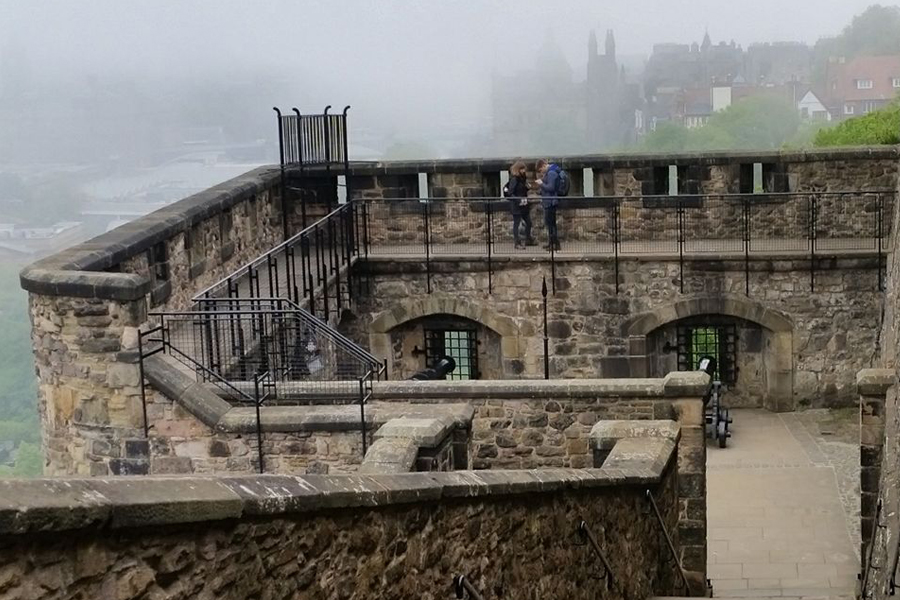
Could This Ancient Technique Be the Future of Protecting Historic Buildings from Collapsing?
Historic buildings are irreplaceable treasures that connect us to our past, but they are also highly vulnerable, especially in seismically active regions. Protecting these ancient structures from collapse is a pressing concern.
The Earthquake
That Threatened Castello Delle Rocche
In May 2012, a 6.0 magnitude earthquake hit northern Italy, devastating historical sites, causing widespread damage to the region’s historic and cultural heritage.
Especially in the important historic town Finale Emilia with roots tracing back to 1009. Finale Emilia was one of the main outposts for the Este Duchy, an obligatory stop along the river roots which connected Modena, Ferrara and Venice. Castello Delle Rocche, located in Finale Emilia, was among the affected structures.
Though the earthquake’s impact was severe; half of the castle remained intact.
This unexpected survival intrigued the interest of the experts of Core Conservation to look into why some parts of the structure could withstand such powerful seismic forces.
Why half of this 15th-century castle crumbled, the other half stood firm. What was the secret behind its resilience?
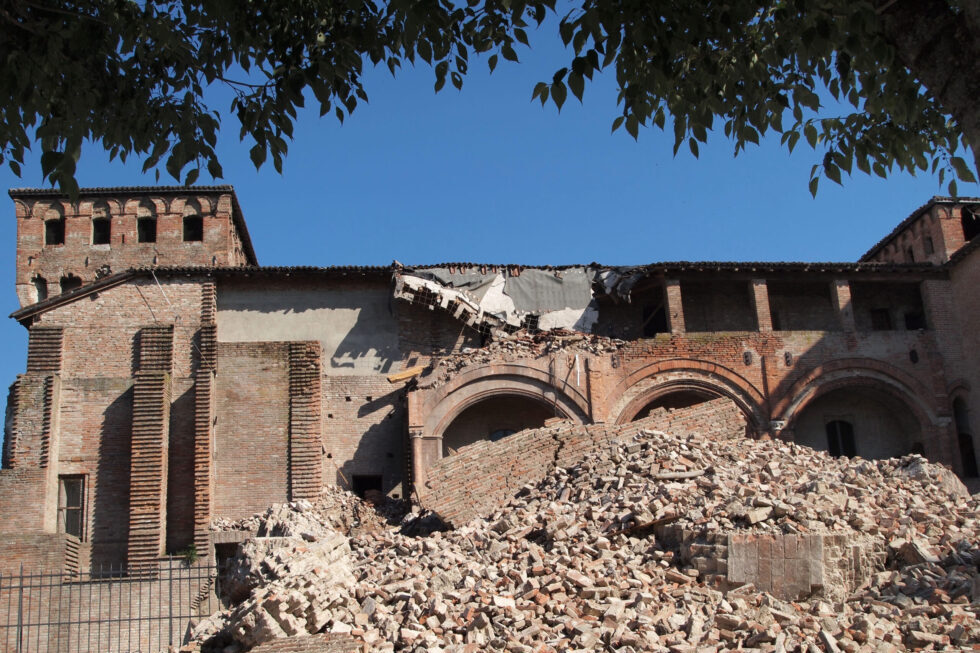
Historical Precedents: Learning from Ancient Rome
Concerned about the stability of historic buildings, Italian authorities initiated a programme to reinforce historic structures in seismic regions.
However, the widely adopted approach of applying several inches of cement reinforced with steel was found to cause long-term deterioration of the historic fabric. As a result, further research was required to identify a more suitable method for seismic and structural reinforcement that would preserve the integrity of these heritage buildings.
Enter Naldo Busato, a master craftsman renowned for his work on over 6,000 historic buildings, including the Venetian Lagoon World Heritage site. Drawing on ancient Roman techniques, Mr. Busato utilised a Roman lime mortar recipe, known historically for its flexibility and strength—both essential qualities for seismic resilience. The recipe was meticulously tested and proven successful.
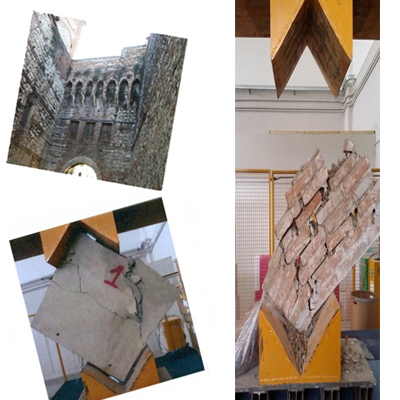
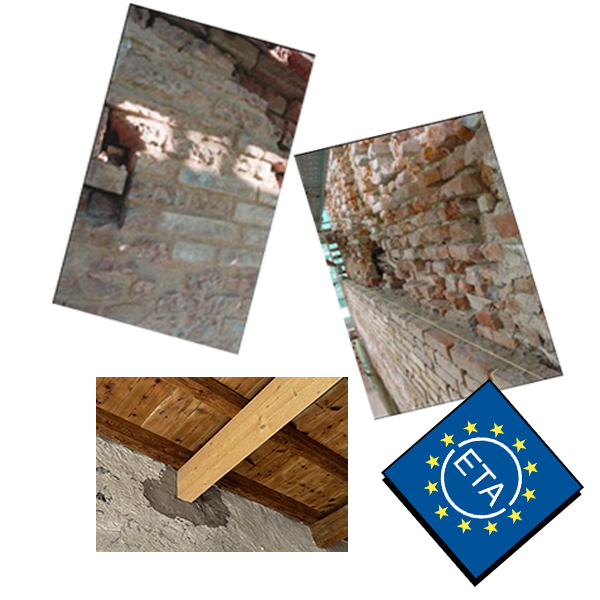
The ancient Romans were master builders who used lime materials in their constructions, allowing structures to flex rather than break under stress.
Busato’s adaptation of this Roman technique has proven effective, meeting all 21st-century standards for structural reinforcement. This achievement led to the system becoming the first fully ETA (European Technical Assessment) certified lime-based structural solution for old and historic buildings.
The material is now available for purchase under the name MGN Betoncino Consolidante.
It can be applied in various ways:
- For repointing weakened masonry
- As a reinforcing render
- For reinforcement by constructing and attaching a supporting wall to the weakened masonry (see picture on the left)
- For filling cracks and gaps caused by earthquake and subsidence
- As a bedding mortar when sections of the masonry are being rebuilt
The South Wing Had Been Reinforced for 2012
... when the earthquake hit Finale Emilia
In 2010 local authorities approved the seismic reinforcement of the South Wing of Castello delle Rocche using MGN Betoncino Consolidante.
When the earthquake struck in 2012, Naldo Busato’s solution stood the test of a 6.0 magnitude earthquake but the moment of recognition turned bittersweet. Due to lack of funding, only the South Wing was reinforced, resulting in the total annihilation of the other parts of Castello delle Rocche.
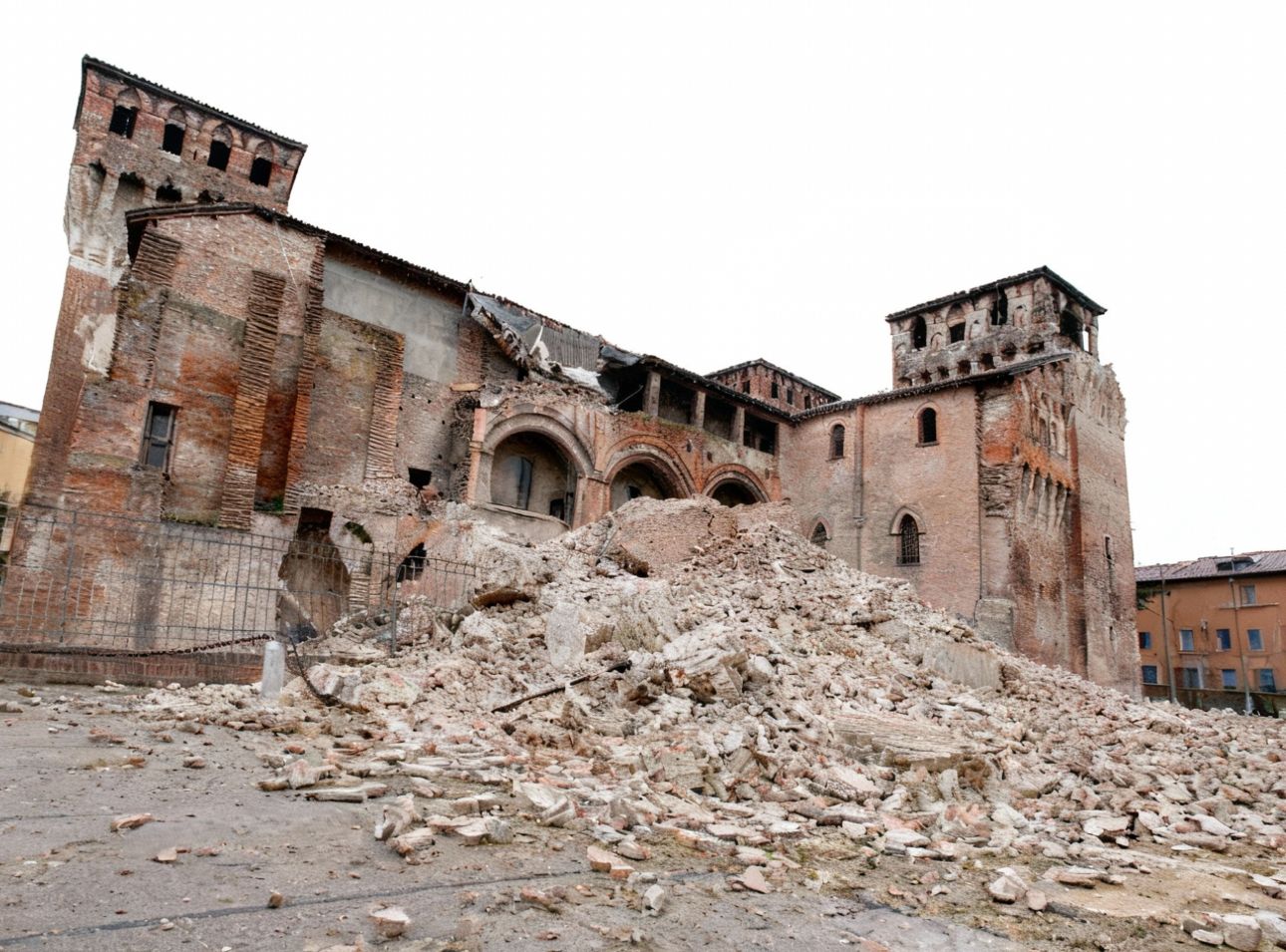
The Lime-Based
Structural Reinforcement System:
A Modern Adaptation
This material boasts high compression strength, flexibility, and breathability—qualities that are crucial for reinforcing historic masonry without the downsides of modern cement.
The success of Castello delle Rocche’s survival can be attributed to the Betoncino Consolidante MGN system.
Inspired by ancient techniques, this lime-based structural reinforcement combines high compression strength with the flexibility needed for structural consolidation.
Unlike cement, which can be too rigid and harmful to old structures, Betoncino Consolidante MGN is breathable, gentle on original building materials, and adaptable to various types of masonry, from brick to stone. This makes it a sympathetic and effective solution for heritage conservation.
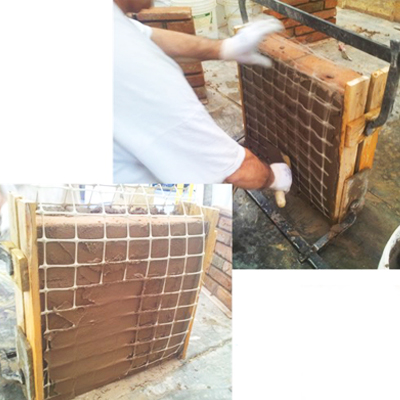
Reinforcement Render Application Process:
A Step-by-Step Guide
Applying Betoncino Consolidante MGN is straightforward and adaptable to your building’s specific needs. Here’s a quick guide:
- Masonry Repair: Fill any gaps, cracks and holes using Betoncino Consolidante
- Initial Application: Start with a consistent 15 mm coat of Betoncino Consolidante MGN on the affected masonry.
- Reinforcement Mesh: Lay a reinforcement mesh over the initial coat to add structural integrity.
- Second Coat: Apply another 10-15 mm of the material over the mesh.
- Fibreglass Anchors (optional): For added strength, use fibreglass anchors to connect the reinforced sections into the masonry, securing them in place.
Key Highlights:
- High compression strength and adhesion power
- Flexible and breathable, preserving the original fabric
- Compatible with all types of traditional masonry
- Performs well in damp or wet environments
- High salt resistance
- Free from cement, plastics, and polymers
underpinning and crack repair to embedding structural timber,
all without the drawbacks associated with modern cement.
